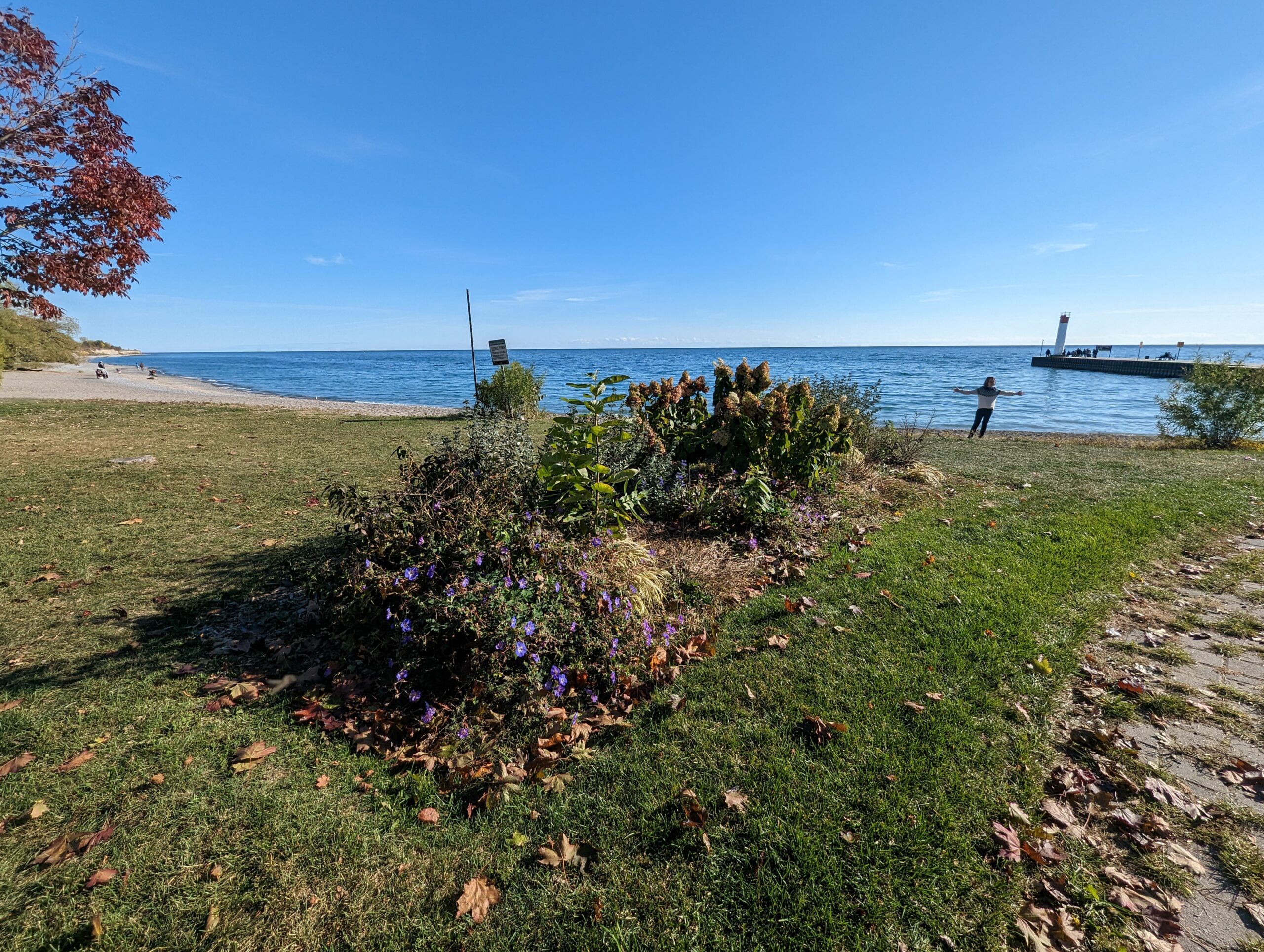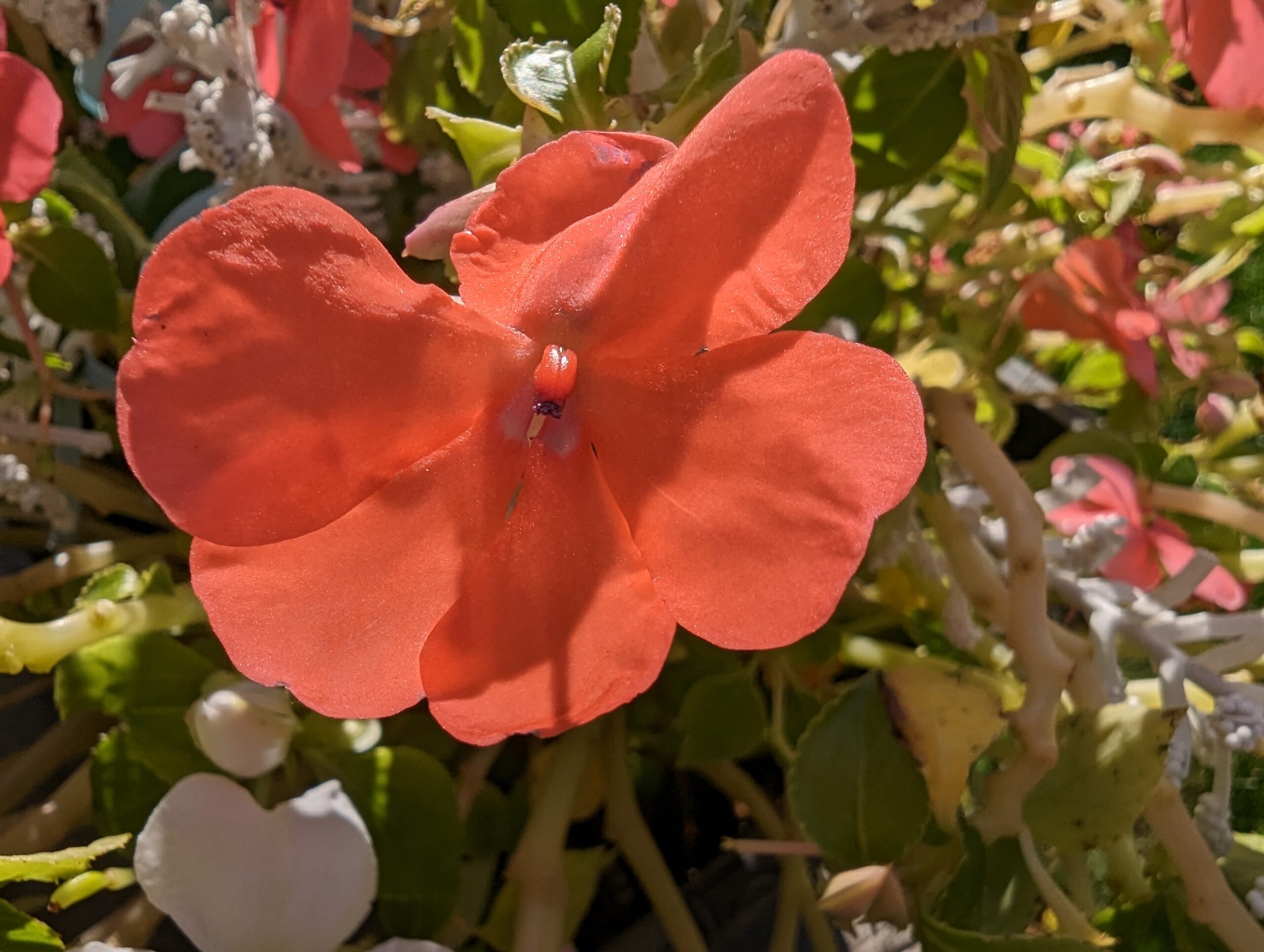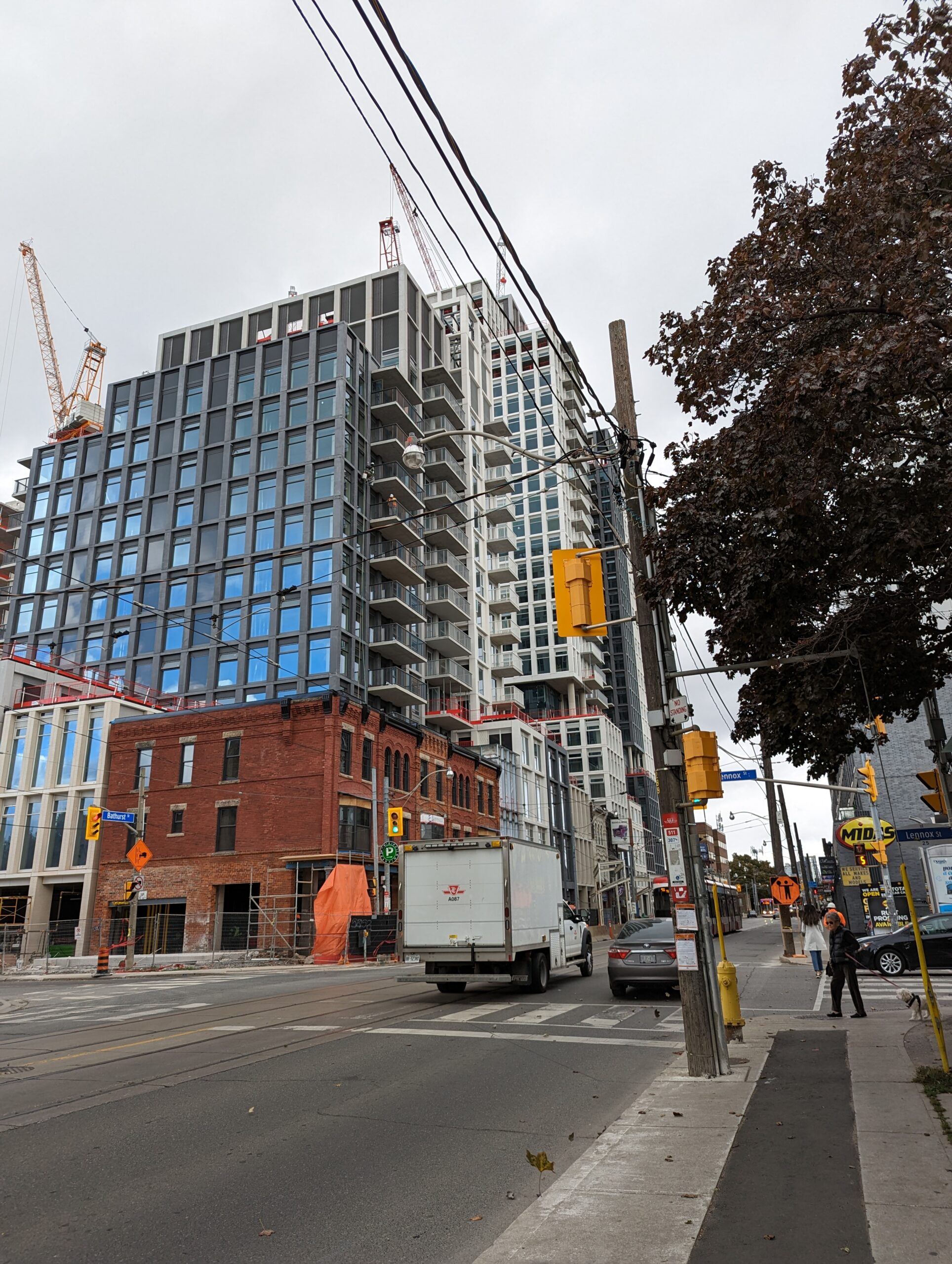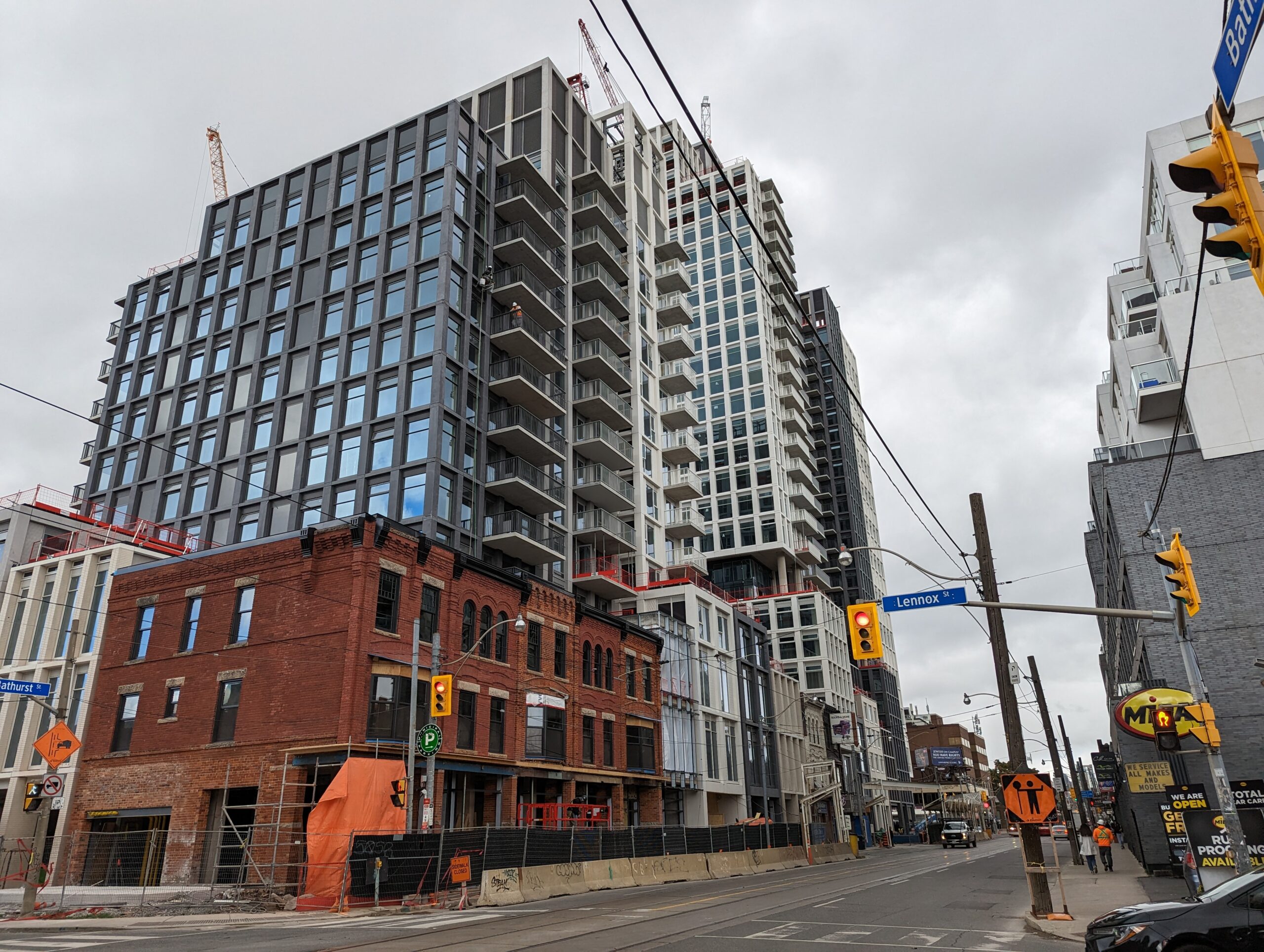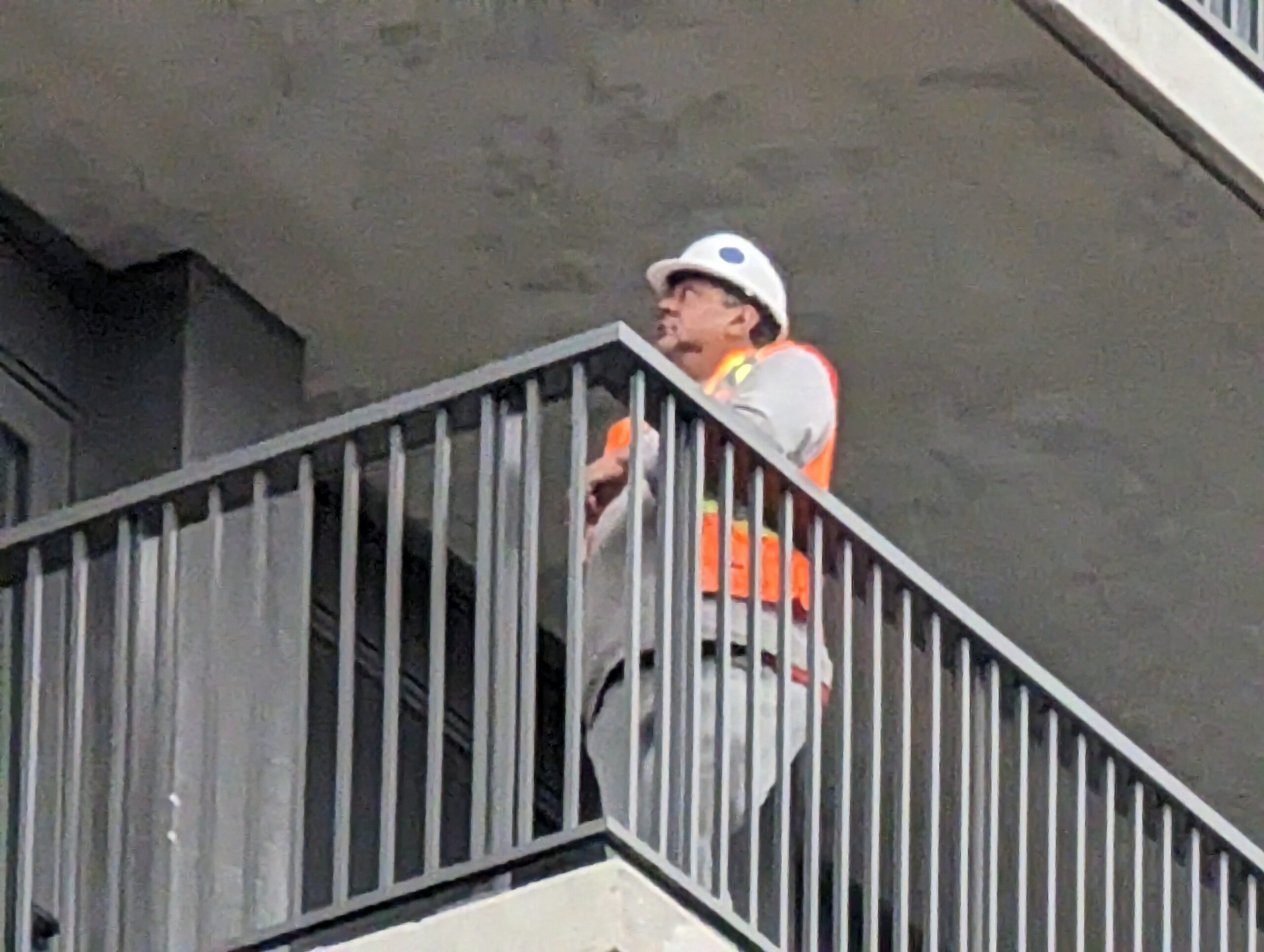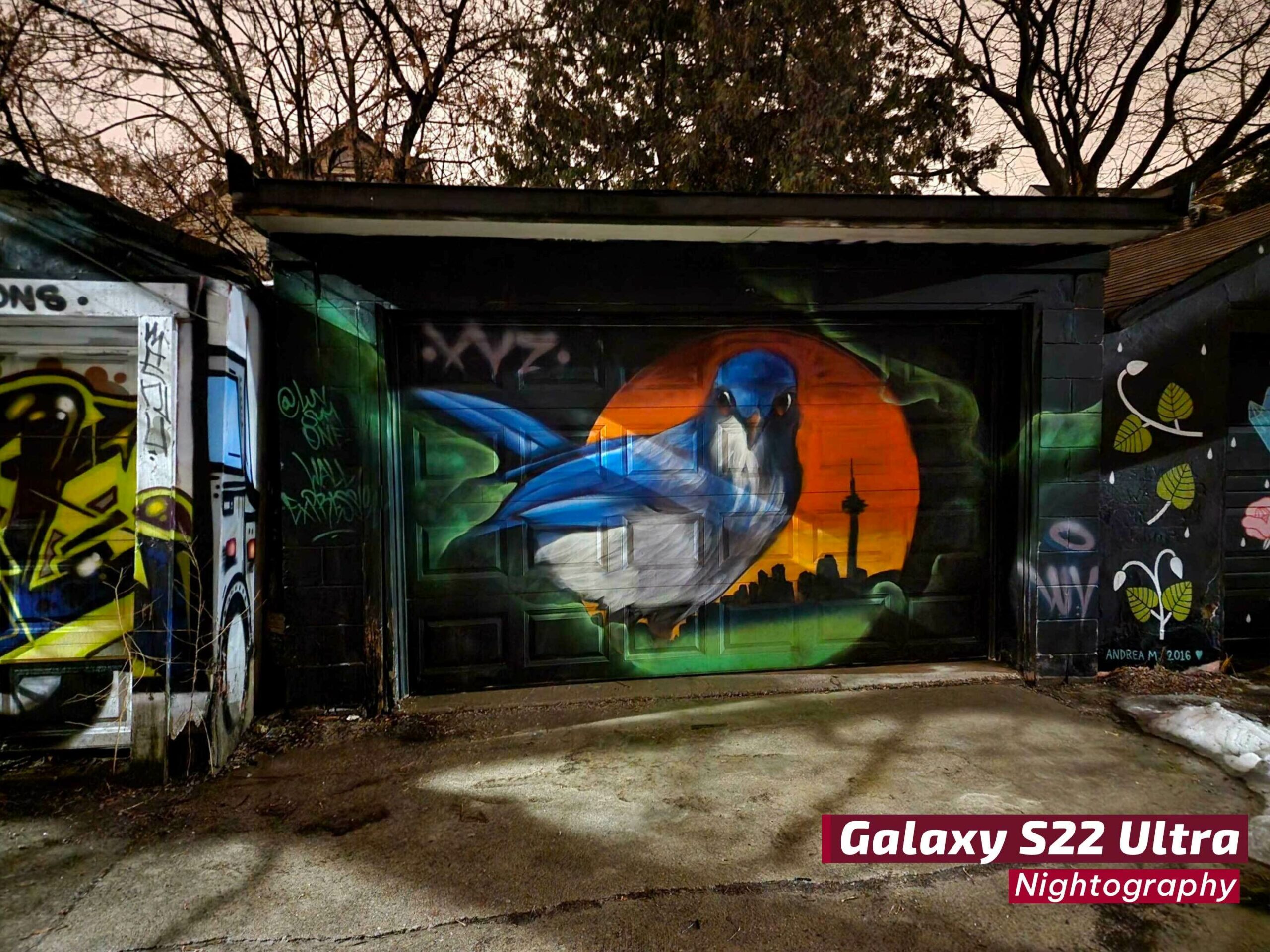The Pros
- Great all around camera system
- Striking design
- More affordable than other flagships
The Cons
- Average battery
- The Cinematic Blur isn't as good as the other flagships
- Benchmarks low compared to competitors
Back in May, Google offered a first look at the Pixel 7 and 7 Pro. In the months following the reveal, I’ve been looking forward to the successor to the Pixel 6 Pro. Now that I’ve finally gotten my hands on Google’s new flagship, I can confirm that it’s more of a minor update than a significant step forward.
I think of the device as the Pixel 6 Pro S in some respects — a more refined version of the Pixel 6 Pro that’s a worthwhile purchase depending on what smartphone you’re currently using. This isn’t entirely shocking, especially given Samsung and Apple released minor updates to their devices this year, too. However, the Pixel 7 Pro takes an even smaller step forward when compared to its competitors. To be clear, I still think the Pixel 7 Pro is a great device, but it’s also not an Android handset worth considering if you already own the Pixel 6 Pro or Samsung’s Galaxy S21.
Nevertheless, the Pixel 7 Pro boasts impressive specs, including Google’s new Tensor G2 chip, 12GB of RAM, a 5,000mAh battery, a 6.7-inch display with a 3120 x 1440-pixel resolution with a 120Hz refresh rate that can drop to 10Hz, a triple camera setup and more.
All of these features, combined with a fresh Material user interface (UI) and an elegant design, make the Pixel 7 Pro a spectacular handset.
Pixel 7 Pro
Samsung Galaxy S22 Ultra
iPhone 14 Pro Max
Display
6.7-inch, (1440 x 3120) QHD+ display, 512ppi, 10-120Hz refresh rate
6.8-inch Curved Dynamic AMOLED, 1,440 x 3,200 pixels, 20:9 aspect ratio, 120Hz display (variable 1-120Hz), HDR10+, 240Hz Touch Sampling in Games
6.7-inch, Super Retina XDR, OLED True Tone display, 2779 x 1290 pixels, HDR 10, Dolby Vision, 120Hz refresh rate
Processor
Tensor G2
Snapdragon 8 Gen 1
A16 Bionic chip
RAM
12GB of RAM
8GB of RAM, 12GB of RAM
N/A
Storage
128GB, 256GB, 512GB
128GB, 256GB, 512GB, 1TB
128GB, 256GB, 512GB, 1TB
Dimensions (in.)
6.4 x 3.0 x 0.3in. (162.9 x 76.6 x 8.9mm)
163.3 x 77.9 x 8.9mm
160.7 x 77.6 x 7.85mm
Weight
212g (7.5oz)
229g
240g
Rear Facing Camera
50-megapixel (primary) + 48-megapixel (telelphoto, x5 zoom) + 12-megapixel (ultrawide)
108-megapixel (f/1.8), 12-megapixel (f/2.2, 120-degree), 10-megapixel (f/4.9, 10x zoom), 10-megapixel (f/2.4, 3x zoom)
48-megapixel (f/1.78, OIS, wide angle) + 12-megapixel (f/2.8, OIS, telephoto 3x optical ) + 12-megapixel (f/2.2, OIS, ultra-wide angle)
Front Facing Camera
10.8-megapixel (ultrawide)
40-megapixel (f/2.2)
12-megapixel (f/1.9)
OS
Android 13
Android 12, One UI 4.1
iOS 16
Battery
5,000mAh
5,000mAh
Up to 29 hours video playback
Network Connectivity
LTE/ 5G
5G, LTE, Wi-Fi 6E
LTE/5G
Sensors
Fingerprint (in-display), Face Unlock, accelerometor, gyro, proximity, compass
Fingerprint (in-display), accelerometor, gyro, proximity, compass
Face ID, Three axis gyro, Accelerometer, Ambient light sensor, Barometer
SIM Type
Dual SIM (single nano-SIM and eSIM)
Nano SIM, eSIM
Nano SIM, eSIM
Launch Date
October 13, 2022
February 25, 2022
September 16, 2022
Misc
Colours: Obsidian, Snow, Hazel
Colours: 'Phantom Black,’ ‘Phantom White,’ ‘Green,’ ‘Burgundy,’ and Samsung exclusive colours ‘Gray,’ ‘Light Blue,’ and ‘Red.’ & S Pen with 2.8 m/s latency
Colours: Space Black, Silver, Gold, Deep Purple
Display
Pixel 7 Pro
6.7-inch, (1440 x 3120) QHD+ display, 512ppi, 10-120Hz refresh rate
Samsung Galaxy S22 Ultra
6.8-inch Curved Dynamic AMOLED, 1,440 x 3,200 pixels, 20:9 aspect ratio, 120Hz display (variable 1-120Hz), HDR10+, 240Hz Touch Sampling in Games
iPhone 14 Pro Max
6.7-inch, Super Retina XDR, OLED True Tone display, 2779 x 1290 pixels, HDR 10, Dolby Vision, 120Hz refresh rate
Processor
Pixel 7 Pro
Tensor G2
Samsung Galaxy S22 Ultra
Snapdragon 8 Gen 1
iPhone 14 Pro Max
A16 Bionic chip
RAM
Pixel 7 Pro
12GB of RAM
Samsung Galaxy S22 Ultra
8GB of RAM, 12GB of RAM
iPhone 14 Pro Max
N/A
Storage
Pixel 7 Pro
128GB, 256GB, 512GB
Samsung Galaxy S22 Ultra
128GB, 256GB, 512GB, 1TB
iPhone 14 Pro Max
128GB, 256GB, 512GB, 1TB
Dimensions (in.)
Pixel 7 Pro
6.4 x 3.0 x 0.3in. (162.9 x 76.6 x 8.9mm)
Samsung Galaxy S22 Ultra
163.3 x 77.9 x 8.9mm
iPhone 14 Pro Max
160.7 x 77.6 x 7.85mm
Weight
Pixel 7 Pro
212g (7.5oz)
Samsung Galaxy S22 Ultra
229g
iPhone 14 Pro Max
240g
Rear Facing Camera
Pixel 7 Pro
50-megapixel (primary) + 48-megapixel (telelphoto, x5 zoom) + 12-megapixel (ultrawide)
Samsung Galaxy S22 Ultra
108-megapixel (f/1.8), 12-megapixel (f/2.2, 120-degree), 10-megapixel (f/4.9, 10x zoom), 10-megapixel (f/2.4, 3x zoom)
iPhone 14 Pro Max
48-megapixel (f/1.78, OIS, wide angle) + 12-megapixel (f/2.8, OIS, telephoto 3x optical ) + 12-megapixel (f/2.2, OIS, ultra-wide angle)
Front Facing Camera
Pixel 7 Pro
10.8-megapixel (ultrawide)
Samsung Galaxy S22 Ultra
40-megapixel (f/2.2)
iPhone 14 Pro Max
12-megapixel (f/1.9)
OS
Pixel 7 Pro
Android 13
Samsung Galaxy S22 Ultra
Android 12, One UI 4.1
iPhone 14 Pro Max
iOS 16
Battery
Pixel 7 Pro
5,000mAh
Samsung Galaxy S22 Ultra
5,000mAh
iPhone 14 Pro Max
Up to 29 hours video playback
Network Connectivity
Pixel 7 Pro
LTE/ 5G
Samsung Galaxy S22 Ultra
5G, LTE, Wi-Fi 6E
iPhone 14 Pro Max
LTE/5G
Sensors
Pixel 7 Pro
Fingerprint (in-display), Face Unlock, accelerometor, gyro, proximity, compass
Samsung Galaxy S22 Ultra
Fingerprint (in-display), accelerometor, gyro, proximity, compass
iPhone 14 Pro Max
Face ID, Three axis gyro, Accelerometer, Ambient light sensor, Barometer
SIM Type
Pixel 7 Pro
Dual SIM (single nano-SIM and eSIM)
Samsung Galaxy S22 Ultra
Nano SIM, eSIM
iPhone 14 Pro Max
Nano SIM, eSIM
Launch Date
Pixel 7 Pro
October 13, 2022
Samsung Galaxy S22 Ultra
February 25, 2022
iPhone 14 Pro Max
September 16, 2022
Misc
Pixel 7 Pro
Colours: Obsidian, Snow, Hazel
Samsung Galaxy S22 Ultra
Colours: 'Phantom Black,’ ‘Phantom White,’ ‘Green,’ ‘Burgundy,’ and Samsung exclusive colours ‘Gray,’ ‘Light Blue,’ and ‘Red.’ & S Pen with 2.8 m/s latency
iPhone 14 Pro Max
Colours: Space Black, Silver, Gold, Deep Purple
A design that stands out
![]()
Google’s Pixel 7 Pro offers a more premium look when compared to its predecessor. The phone features a 162.9 x 76.6 x 8.9mm body, making it shorter in length but also wider and with the same thickness as the Pixel 6 Pro. It’s also only slightly heavier than the Pixel 6 Pro. This is likely because the phone offers a sturdier build, as it’s a bit shorter and broader than the Pixel 6 Pro.
I prefer this look over last year’s model, and I really like that it feels more solid and premium compared to its predecessor.
The front of the handset looks familiar to last year’s smartphone, with its large 6.7-inch display and singular front-facing hole-punch camera. The smartphone also features a slightly curved panel, similar to the Pixel 6 Pro. I was looking forward to the rumours indicating the Pixel 7 Pro would feature a flatter screen, but unfortunately, that’s not the case.
![]()
The handset features a polished aluminum frame with a textured power button and volume rocker. The aluminum frame melds into the camera visor on the rear handset. It’s worth noting that the polished aluminum doesn’t feel as nice as the matte aluminum on the Pixel 7, unfortunately.
I have the ‘Hazel’ colour variant, which is exclusive to the Pixel 7 Pro and the best of the three. The visor comes in silver with bronze accents that change depending on the light, but for the most part, it’s pretty much entirely silver. It also features three large lenses with an oval-shaped hole that houses the primary and ultrawide lenses and another singular periscope lens. I’ve had the phone for less than a week, and there are already a few minor scratches on the visor.
The rest of the rear sports a glossy glass material that attracts far too many fingerprints and smudges for my taste, but I’m fond of the grey-green colour. The Pixel 7 Pro also comes in ‘Obsidian’ (black) and ‘Snow’ (white).
Oh, that’s bright
![]() Flipping to the front of the handset, the Pixel 7 Pro features a 6.7-inch screen with a 1440 x 3120-pixel resolution that displays content beautifully. From looking at my own pictures and scrolling through Instagram to playing games, watching Shorts on YouTube and even sitting through part of an episode of Rings of Power, everything on the screen looks great. Colours are beautifully rendered, whites are sufficiently bright, and blacks are as dark as they need to be.
Flipping to the front of the handset, the Pixel 7 Pro features a 6.7-inch screen with a 1440 x 3120-pixel resolution that displays content beautifully. From looking at my own pictures and scrolling through Instagram to playing games, watching Shorts on YouTube and even sitting through part of an episode of Rings of Power, everything on the screen looks great. Colours are beautifully rendered, whites are sufficiently bright, and blacks are as dark as they need to be.
The handset also reaches up to 1,500 nits of brightness, which, while sufficient, is not as high as the peak brightness available in the Galaxy S22 Ultra and the iPhone 14 Pro. The S22 Ultra boasts a peak brightness of 1,750, and the iPhone 14 Pro offers a solid 2,000 nits of brightness. To be fair, 1,500 nits of brightness should be good enough in nearly all situations, and I didn’t experience any issues looking at the Pixel 7 Pro’s screen under bright conditions.
Alongside its pixel resolution and brightness, the Pixel 7 Pro features a 120Hz refresh rate panel that’s capable of dropping to 10Hz when the higher refresh rate isn’t needed. This helps the phone’s battery life and offers buttery smooth scrolling and gaming.
Finally, 5x zoom
![]()
As always, a notable part of any smartphone review is focused on its cameras. Google’s Pixel line has always been known for its camera prowess, and while it might not always feature hardware upgrades, it’s typically great at improving its software.
This year, the phone features the same 50-megapixel primary shooter, but we got an upgraded 48-megapixel telephoto camera that offers 5x optical zoom and an ultra-wide shooter with an even wider 126-degree field-of-view.
This slideshow requires JavaScript.
First off, let’s start with the handset’s zoom capabilities. The Pixel 7 Pro uses the 50-megapixel main sensor with a sensor crop technique to achieve what the company claims is equivalent to a 2x optical zoom. For zoom levels between 2x and 5x, the phone fuses data from the cropped primary sensor and from the 48-megapixel telephoto camera. At 5x, the Pixel 7 Pro uses just the optical zoom provided by the telephoto lens but repeats the sensor crop technique with the 48-megapixel sensor to achieve 10x zoom. The handset utilizes fusing techniques to improve detail in shots up to the maximum 30x zoom.
2x to 4x zoom also looks pretty good. Google’s cropping technique is very similar to what Apple is doing with the iPhone 14 Pro. At 2x zoom, these shots are nearly as good as regular photos. However, when pushing to 4x zoom, images seem to lose detail; at that point, it might be better to shoot at 5x zoom.
Photos taken with 5x zoom are accurate, detailed and feature accurate colours. These pictures weren’t as good as the standard 50-megapixel camera but looked great nonetheless.
“Low-light photography is as solid as ever, with pictures that look vivid and full of detail.”
At 10x zoom, images still look okay and are worthy to post on Instagram, but they pale compared to the S22 Ultra’s optical zoom lens. They lack detail and sharpness, so look a bit blurry. It’s worth mentioning that Google’s new camera feature, ‘Photo Unblur,’ actually helps with this issue and can sharpen the image and add detail using the Tensor G2 chip. In combination with unblur, 10x zoom images are pretty good. It’s still not at the same quality as what’s available on the S22 Ultra, but it’s comparable.
Pushing it one step further is the 30x zoom. The 30x zoom is pretty good, and I could snap a clear photo of a construction worker while he was working on a condominium. Further, I could get a much better view of the CN Tower from Whitby, but the images lack detail and are a bit blurry. And unlike the 10x zoom, the unblur feature’s ability to make pictures look better is frivolous here. It’s good, and I can see how it could be useful, but if you want a smartphone solely for its zoom, Samsung’s S22 Ultra is a better choice.
Speaking of unblur, the feature helps add details and sharpening to blurry photos, but it seems hit or miss for the most part, and the functionality isn’t outstanding. It’s helpful, sometimes (like when 10x zooming), but not always.
![]()
Pixel shooter
![]() To test the Pixel 7 Pro’s camera, I went out on a sunny day along the pier in Whitby. I snapped pictures of waves, the incredibly blue sky, the very green grass and the red and orange hues of the autumn leaves.
To test the Pixel 7 Pro’s camera, I went out on a sunny day along the pier in Whitby. I snapped pictures of waves, the incredibly blue sky, the very green grass and the red and orange hues of the autumn leaves.
Every image I snapped looks great, and you can see a beautifully wide range of colours, and shadows are sufficiently dark and highlighted brightly. Images are also incredibly detailed, and even on closer inspection, you can see a perfect outline of the leaves in some trees.
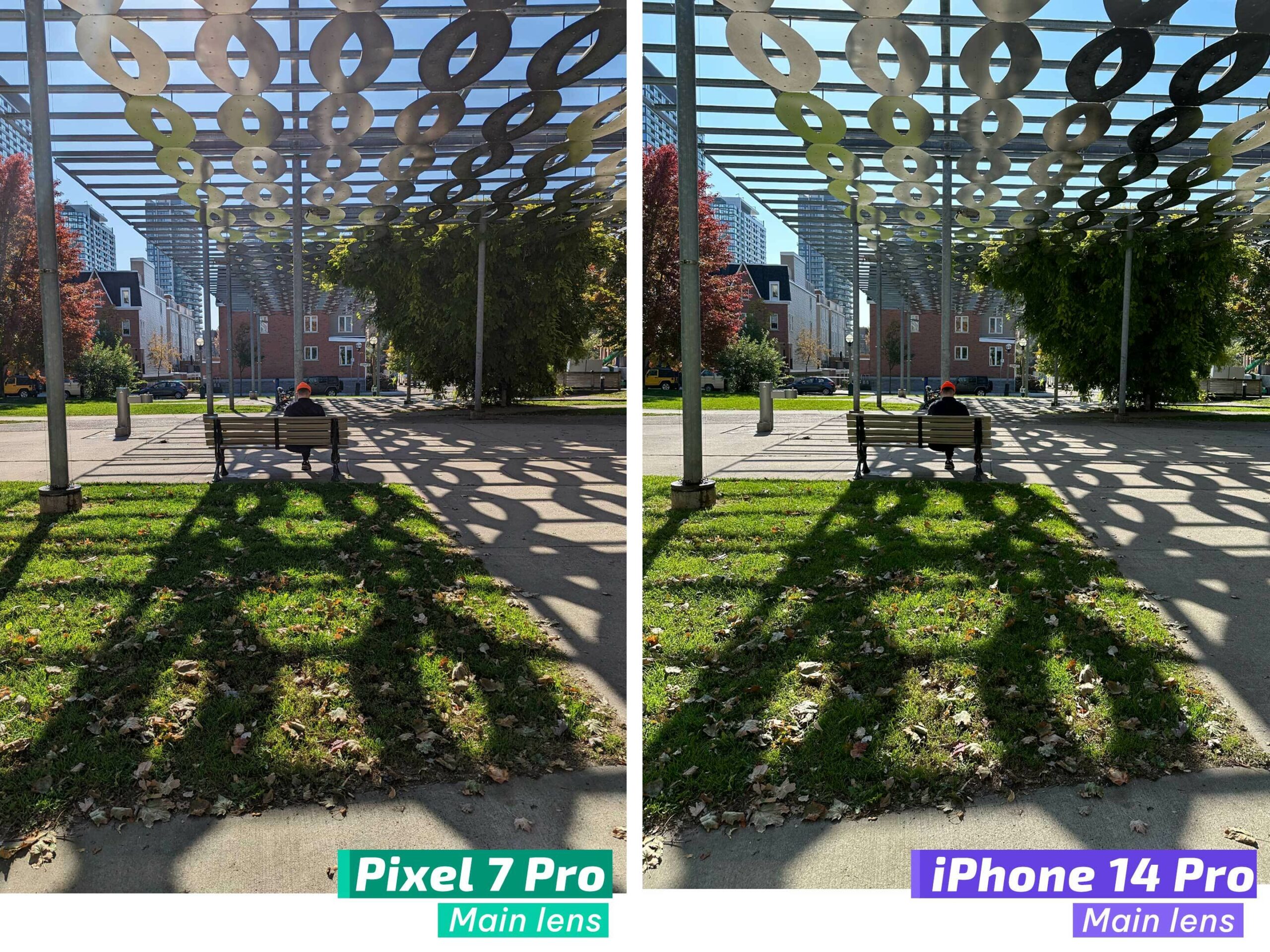
Portrait mode also does a great job of blurring out the background. It’s worth noting that these shots are a bit more saturated than what’s available on Apple’s iPhone 14 Pro, whereas these shots are a bit under-saturated compared to the S22 Ultra. That said, Apple’s iPhone 14 Pro is better at catching the dynamic range than the Pixel 7 Pro, but this was only noticeable when I had both phones in my hands.
The 126-degree ultrawide shooter is also fantastic at taking incredibly detailed images, similar to the main shooter. The ultrawide camera can also take macro pictures, a feature that isn’t typically included in flagship cameras. The feature works and images are detailed, but I don’t find this functionality all that useful.
The handset’s front-facing shooter is also pretty great. In some of these pictures, I’m wearing an oversized fleece sweater, and you can clearly see the material and details in my beard. I can capture a lot more in the photo by switching the phone’s selfie shooter to its wide-angle mode. It can definitely help when a selfie stick isn’t available.
Google says that it worked on ‘Real Tone’ by using 10,000 additional portraits of people of colour to make the Pixel camera consistently render skin tones.
With the selfie shooter, I found Real Tone a bit inconsistent. In some shots, it displays my skin tone beautifully, but occasionally, it adds an ashy tone to my skin, greying it out. This didn’t happen much, but it ruined some of my shots.
Low-light photography is as solid as ever, with pictures that look vivid and full of detail. Colour accuracy seems to be on point, and the phone does a good job of brightening only points in the picture. I found that the S22 Ultra brightened the whole image, giving night photos a day-like appearance. With the Pixel 7 Pro, these images are bright, so you can perfectly see the object of your photo, but you can also still tell that it’s shot at night. I prefer this over how the S22 Ultra approaches night photos. The feature works a bit differently this time, as it’s a lot faster to take a shot, and you can even select how long it captures. This above shot is at three seconds.
And finally, don’t take pictures with the ultrawide shooter as these images don’t turn out well. This is because the phone’s ultra-wide camera seems to lack Night Sight functionality. Combined with the small aperture, it’s not letting in enough light to brighten images.
![]() Google says it improved Real Tone in low-light conditions. In my limited testing, the phone lives up to what Google says. Even in poor lighting, my pictures were still detailed, and my skin tone seemed true to life.
Google says it improved Real Tone in low-light conditions. In my limited testing, the phone lives up to what Google says. Even in poor lighting, my pictures were still detailed, and my skin tone seemed true to life.
I briefly tried out ‘Cinematic Blur,’ and I believe that it worked well. However, Apple and Samsung’s flagships do a better job. They seem to lock onto the subject better, and the Pixel 7 Pro tends to over blur the background, instead of making the video look more cinematic. On both the S22 Ultra and iPhone 14 Pro, you can change the intensity of the blur, whereas on the Pixel 7 Pro, you can’t. Apple’s Cinematic mode is also available in 4K, while it only works in 1080p on the Pixel 7 Pro. I think the Pixel 7 Pro’s Cinematic Blur will improve in the future, but in its current state, it’s passable but not at the same level as the iPhone 14 Pro and S22 Ultra. You can check out our upcoming Pixel 7 Pro video to see how the Pixel 7 Pro’s Cinematic Blur compares to the iPhone 14 Pro’s.
Google has also added several other video improvements like 10-bit HDR, 4K 60fps recorder support and Active Stabilization, but we’ve had these devices for less than a week, so we’ll need to take a more in-depth look at these video features in a future camera review article.
Tensor G2 gets the job done
![]()
Google’s Pixel 7 Pro features Tensor G2 and 12GB of RAM. A flagship processor and 12GB of RAM are becoming the standard among premium Android smartphones. The phone is snappy, and I haven’t experienced any slowdown yet. Thanks to its ample RAM, the Pixel 7 can keep numerous apps open without any issues. The only problem I encountered occurred when I rapidly switched between the ultra-wide, telephoto and primary camera lenses.
I’ve played games like Wild Rift and Apex Legends Mobile without any issues. The Pixel 7 Pro did get slightly warm after playing for roughly 15 minutes, but never too hot.
Benchmark-wise, the Pixel 7 Pro hit a single-core score of 1,028 and a multi-core score of 3,064 on Geekbench. Benchmarks don't necessarily equate to the actual experience of using a smartphone, but it's worth noting that the Samsung Galaxy S22 Ultra and iPhone 14 Pro benchmark better than the 7 Pro. I'm not saying that this makes those two flagships better than the Pixel 7 Pro, but benchmarks are worth considering in some respects.
Battery-wise, the handset lasts roughly a day. If I turn it on at 9am, it stays alive until nighttime with average usage. This isn't the best smartphone battery life out there, but it's similar to the S22 Ultra, which I also needed to charge at night. Google boasts that the battery can survive up to 72 hours with the 'Extreme Battery Saver' turned on.
![]()
Extreme Battery Saver pauses most apps and notifications. It can turn off Wi-Fi, hotspots and other network connections, as well as features like "Hey Google" and background activity. You can select important apps to break through the Extreme Battery Saver, but I don't like turning on this feature unless I only have a small amount of power left. If you have this feature turned on from the moment you wake up, the device would last a long time but would lack many features that make smartphones smart. I don't think this is realistic for most people.
One day when my phone's battery was pretty low because of hardcore usage, including gaming, shooting videos and benchmarking, I found myself with about 20 percent battery at around 5pm (I turned on my phone that morning at 10am). When I turned on Extreme Battery Saver, the handset still had approximately 10 percent power left at 11pm. This was pretty useful, but the only functionality I could access during this time was texting. For example, at one point, I was lost and paused Extreme Battery Saver for a short time to use Google Maps.
"...Pixel devices typically suffer from issues that appear roughly a month or two after release."
Surprisingly, the Pixel 7 Pro might also be one of the loudest phones I've used. Using the Sound Meter app, I determined that music consistently peaked around 78-79 decibels. For reference, the S22 Ultra peaked around at its loudest 75 decibels. The only other phone I've reviewed that compares is the Z Flip 3, which reached between 75 to 79 decibels. The sound is punchy, articulate, and loud -- great for emo and pop music -- but seems to lack bass, so you wouldn't want it to be the only device if you're throwing a party.
Google also added features like faster 'Direct My Call' which improves the experience of navigating through the options menu when you're calling a business, and 'Clear Calling,' which uses machine learning to enhance calls, but in my short time with the phone, I haven't been able to test out these features. The Recorder app can also automatically add speaker labels, although similarly, I haven't tested this out yet.
Face Unlock is back
![]()
Google has finally brought back 'Face Unlock' after killing it off three years ago. We haven't seen the functionality since the Pixel 4 series, which offers dedicated face unlock hardware and Google's Soli radar chip to make face unlock secure and smooth. However, the Pixel 7 Pro lacks the dedicated security available in the Pixel 4 series.
Face Unlock on the Pixel 7 Pro is quick when it unlocks your handset. It works almost instantly, and you can set it so that it skips the lock screen. I'd estimate that it works 90 percent of the time, with the feature only occasionally failing to unlock my handset. While it's quick, it's not the best face detection out there. For example, I noticed the feature doesn't work when I wear sunglasses or have my gaming headset on.
Google says Face Unlock on this handset only meets level one security clearance. This means that you're not unable to use face unlock in conjunction with Google Pay, and you'll need your pin code or fingerprint to buy items online or from the Play Store.
Connectivity concerns
![]()
Google's flagships always seem to feature connectivity issues. This year, I haven't experienced any yet. Bluetooth-wise, the handset has consistently been connected to the Galaxy Watch 5, Oura Ring, and on occasion, the Galaxy Buds Live. Regarding networks, I'm on LTE on Koodo. There was one oddity when the phone kept attempting to connect to a headset that I didn't want to connect to. I kept having to decline the pop-up, but every couple of moments, it'd ask again. This didn't occur often, but it was worth looking into.
Too good to be true
The Pixel 7 Pro is a great handset, and I haven't experienced many issues with the device. The phone features top-of-the-line features and specs that can match it with flagships from any other brand.
With a 120Hz refresh rate, 3120 x 1440-pixel resolution, bright screen, 5,000mAh battery, Tensor G2, 12GB of RAM, and great cameras, the Pixel 7 Pro is difficult not to recommend. The Pixel 7 Pro is in the league of the iPhone 14 Pro and S22 Ultra, but it's more affordable than the other flagships at $1,179.
MobileSyrup (and I'm sure other tech publications) are only reviewing this handset with less than a week of usage, and while everything seems great so far, Pixel devices typically suffer from issues that appear roughly a month or two after release. So while I'm currently giving this device a 9/10, problems might emerge later that could cause that score to change. The Pixel 7 Pro is an improved Pixel 6 Pro, so I'm hoping that all the bugs have been worked out with last year's model, but we'll have to wait to find out.
So if you desperately need a new phone right now and you're using a device like a Pixel 4 and don't have the money to spend on the S22 Ultra, then get the Pixel 7 Pro. However, if you can wait a month or two, I'd recommend doing so. I'll be spending more time with the Pixel 7 Pro in the coming days and will update this story if problems start to occur.
Google's Pixel 7 Pro releases on October 13th starting at $1,179.
Photography by Bradley Bennett
"The Pixel 7 Pro is in the league of the iPhone 14 Pro and S22 Ultra, but it's more affordable than the other flagships at $1,179"
MobileSyrup may earn a commission from purchases made via our links, which helps fund the journalism we provide free on our website. These links do not influence our editorial content. Support us here.






